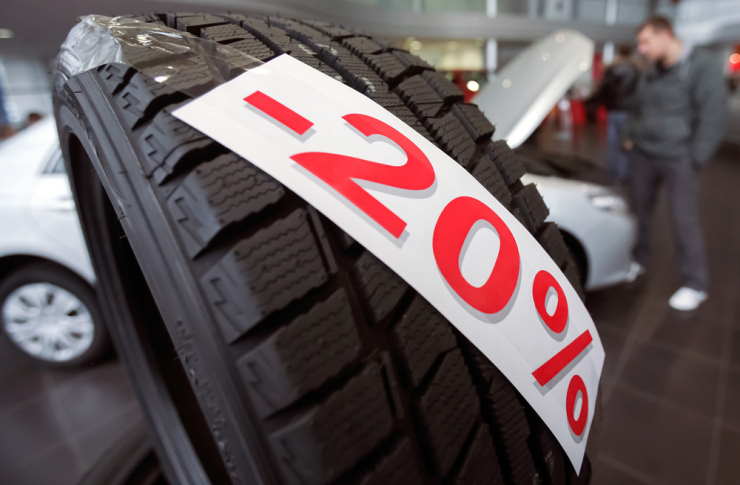A Guide to the Car Deals Still Available This Year
As we progress through the year, savvy car shoppers are discovering that attractive vehicle deals continue to emerge across various market segments. Whether you're looking for a fuel-efficient compact car, a family-friendly SUV, or a reliable pickup truck, understanding current market conditions and available incentives can help you secure significant savings on your next vehicle purchase.

What Types of Car Deals Are Available in 2025?
The automotive market in 2025 offers several distinct types of deals designed to attract different buyer segments. Manufacturers are providing cash-back rebates ranging from $500 to $5,000, depending on the vehicle model and trim level. Low-interest financing options, sometimes as low as 0.9% APR for qualified buyers, remain popular incentives. Lease deals with reduced monthly payments and lower down payment requirements are particularly attractive for drivers who prefer newer vehicles with warranty coverage.
Additionally, trade-in bonuses are becoming more generous, with some dealerships offering above-market value for qualifying vehicles. Special programs for recent graduates, military personnel, and first-time buyers provide additional savings opportunities through targeted discounts and favorable financing terms.
Where to Find Car Promotions and Current Incentives?
Finding the best car promotions requires checking multiple sources regularly, as deals change frequently throughout the year. Manufacturer websites serve as primary sources for official rebates and financing offers, typically updated monthly to reflect current incentives. Local dealership websites often feature region-specific promotions and inventory clearance events that may not be advertised nationally.
Automotive deal aggregation websites compile offers from multiple brands, making it easier to compare incentives across different manufacturers. Social media platforms and manufacturer newsletters frequently announce flash sales and limited-time promotions. Additionally, visiting dealerships in your area during end-of-month, end-of-quarter, or model-year clearance periods often reveals unadvertised deals and additional negotiation flexibility.
How to Conduct Effective Car Price Comparisons?
Successful car price comparisons involve evaluating multiple factors beyond the advertised price. Start by researching the manufacturer’s suggested retail price (MSRP) and current market value through resources like Kelley Blue Book or Edmunds. Factor in available rebates, financing terms, and any applicable fees to calculate the true cost of ownership.
Compare similar vehicles across different brands, considering features, warranty coverage, and reliability ratings. Online comparison tools allow side-by-side evaluations of specifications, pricing, and owner reviews. Don’t forget to include ongoing costs such as insurance, maintenance, and fuel efficiency in your analysis, as these factors significantly impact long-term affordability.
When Is the Best Time to Shop for Vehicle Deals?
Timing plays a crucial role in securing the best car deals throughout the year. Traditional sale periods include end-of-model-year clearances, typically occurring between July and October, when dealerships need to clear inventory for incoming models. Holiday weekends often feature special promotional events with enhanced incentives and rebates.
Monthly and quarterly sales targets create opportunities for better negotiations, particularly during the last week of these periods. Winter months, especially January and February, historically offer favorable deals as consumer demand typically decreases after the holiday season. Additionally, monitoring manufacturer production schedules and inventory levels can help identify when specific models may see increased incentives.
Regional Car Deal Trends and Market Insights
Different regions across the world experience varying car deal availability based on local market conditions, inventory levels, and consumer preferences. Urban markets often see more competitive pricing due to higher dealership density, while rural areas may offer better trade-in values and personalized service. Coastal regions frequently feature more hybrid and electric vehicle incentives, reflecting environmental priorities and infrastructure development.
Weather patterns also influence regional deal availability, with convertibles and sports cars seeing better prices in colder climates during winter months. Additionally, local economic conditions, employment rates, and seasonal industries impact both deal availability and consumer purchasing power, creating unique opportunities in different geographical areas.
Current Vehicle Pricing and Deal Comparisons
Understanding current market pricing helps buyers make informed decisions when evaluating available deals. The following comparison showcases typical deal structures across popular vehicle categories and their associated savings potential.
| Vehicle Category | Average Deal Type | Typical Savings Range | Best Months to Buy |
|---|---|---|---|
| Compact Cars | Cash Rebate + Low APR | $1,500 - $3,000 | January, September |
| Mid-Size SUVs | Lease Specials | $50-100/month reduction | February, October |
| Pickup Trucks | Trade-in Bonuses | $2,000 - $4,000 extra | March, November |
| Luxury Vehicles | Finance Rate Reduction | 1-2% APR savings | December, July |
| Electric/Hybrid | Government + Manufacturer | $3,000 - $7,500 combined | Year-round |
Prices, rates, or cost estimates mentioned in this article are based on the latest available information but may change over time. Independent research is advised before making financial decisions.
Maximizing Your Car Deal Strategy
Successful car deal hunting requires preparation, patience, and strategic thinking. Research your target vehicle thoroughly, including reliability ratings, typical maintenance costs, and resale values. Obtain pre-approved financing from banks or credit unions to strengthen your negotiating position and compare dealership financing offers effectively.
Consider the total cost of ownership rather than focusing solely on monthly payments or initial purchase price. Factor in insurance costs, fuel efficiency, maintenance schedules, and expected depreciation when evaluating deals. Finally, remain flexible with color choices, trim levels, and optional features, as dealerships often provide better incentives on specific inventory they need to move quickly.
The car deal landscape continues to evolve throughout the year, offering opportunities for informed buyers to secure significant savings. By understanding available deal types, knowing where to find current promotions, conducting thorough price comparisons, and timing purchases strategically, car shoppers can navigate the market successfully and find vehicles that meet both their needs and budget requirements.




